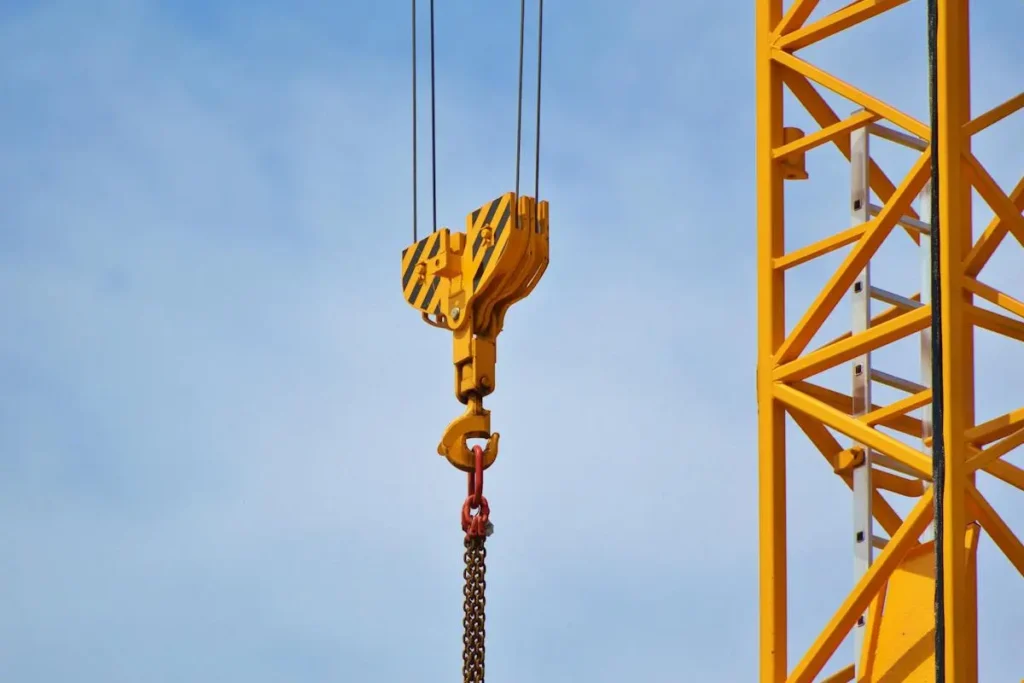Importance of rigging and signal persons
Rigging and signal persons play a crucial role in crane operations. They are responsible for ensuring the safe and efficient movement of heavy loads. A skilled rigging and signal person helps to prevent accidents and ensures that the crane operator receives accurate and timely signals, contributing to a safe work environment.

Roles and responsibilities of rigging personnel
Rigging personnel are responsible for inspecting, attaching, and securing the loads to be lifted by the crane. They also ensure that the load is properly balanced and rigged before lifting. Additionally, they assist the crane operator by signaling and communicating to ensure the safe and efficient movement of the crane and its load. The rigging personnel’s primary role is to maintain a safe and controlled work environment during crane operations. They play a crucial part in preventing accidents and ensuring that the lifting procedures are carried out smoothly.
Importance of communication in crane operations
Good communication between the crane operator, riggers, and signal persons is crucial for a safe and efficient crane operation. It helps to ensure that everyone involved is aware of the tasks at hand, potential hazards, and any necessary adjustments. Clear communication helps to prevent accidents and injuries, allowing for better coordination and execution of lifts. In addition, effective communication helps to maintain productivity and project timelines, contributing to a successful crane operation.
Safety considerations in crane lifting operations
When it comes to crane lifting operations, safety is a top priority. Rigging and signal persons are essential for ensuring the safety of crane operations. They play a crucial role in guiding the crane operator, communicating important signals, and ensuring that the rigging equipment is properly set up and secured. Without their expertise, there would be a higher risk of accidents and injuries during lifting operations. Therefore, the presence of qualified rigging and signal persons is crucial for maintaining a safe and efficient crane operation.
Types of signals used in crane operations
To ensure safety during crane operations, different types of signals are used to communicate with the crane operator. These signals include hoist, trolley, bridge, and boom signals. Each signal has a specific hand and arm movement to convey instructions to the crane operator effectively. The use of standardized signals helps prevent accidents and ensures efficient communication between the signal person and the crane operator.
Rigging equipment and its proper use
Rigging equipment is crucial in crane operations to ensure safe lifting and moving of heavy loads. Proper rigging techniques involve securing the load correctly and using the right equipment to prevent accidents and injuries. It’s important to use the appropriate slings, shackles, and hooks, as well as inspecting them for any signs of wear or damage before use. Additionally, understanding the weight and center of gravity of the load is essential for selecting the proper rigging equipment and distributing the load evenly.
Proper inspection and maintenance of rigging equipment
Proper inspection and maintenance of rigging equipment are crucial for safe crane operations. Inspections should be conducted before each use to check for any signs of wear, damage, or defects. Any issues found during inspection should be addressed immediately to prevent potential accidents or equipment failure. Regular maintenance, including lubrication and cleaning, is essential to ensure that the rigging equipment functions properly and remains in good condition. Regular training for the rigging and signal persons is also important to ensure they are knowledgeable about proper inspection and maintenance procedures.
Training and certification requirements for rigging and signal persons
Before taking on the responsibilities of a rigging or signal person, it is essential to undergo proper training and obtain the necessary certifications. According to the Occupational Safety and Health Administration (OSHA), rigging and signal persons are required to undergo a formal training program that covers crucial topics such as understanding load weights and capacities, rigging gear, and proper hand signal techniques. Additionally, both rigging and signal persons are mandated to earn certification through an accredited organization. OSHA specifies that employers are responsible for ensuring that their rigging and signal persons meet these training and certification requirements to mitigate potential risks and ensure safe crane operations.
Case studies of accidents due to inadequate rigging and signaling
Accidents often occur in crane operations due to inadequate rigging and signaling. In one case study, a crane collapsed because the rigging was not properly inspected for wear and tear, leading to a catastrophic failure. In another instance, a signal person’s failure to communicate effectively resulted in a serious injury to a worker. These accidents highlight the critical role of proper rigging and signaling in crane operations to ensure the safety of workers and prevent costly mishaps.
Conclusion: The crucial role of rigging and signal persons in crane operations
Rigging and signal persons are essential for safe and efficient crane operations. They play a crucial role in ensuring that materials are lifted, positioned, and lowered properly. The rigging personnel are responsible for inspecting and securing the load, while the signal persons communicate with the crane operator to ensure smooth and safe movements. Without their expertise and coordination, crane operations can be hazardous and inefficient, leading to potential accidents and delays. Therefore, the presence of competent rigging and signal persons is vital to the success of any crane operation.

